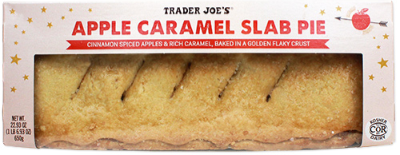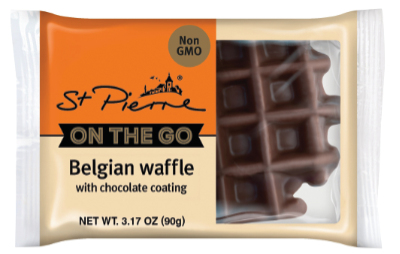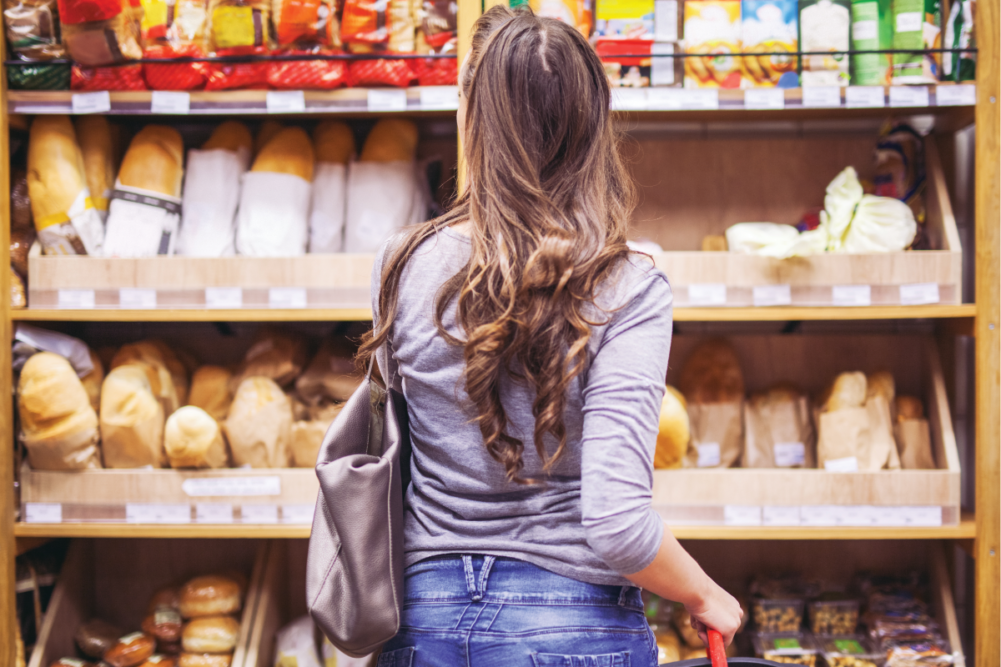Manufacturers of branded bakery goods look to meet both the changing perceptions of consumers and the needs of the retailers they supply.
Food is complicated and in its many forms and iterations, it has the power to inspire feelings, emotions and opinions. As consumers seek out products that provide them with what they want and believe they need, this places retailers and manufacturers in a dichotomy. What are the best ways to attract consumers with desirable products while also meeting the needs of retailers that need variety and an extended shelf life?
Proving ground
It’s no secret the instore bakery has weathered its share of bumps. Despite this, the department remains one of the more attractive areas in the perimeter. Attracting shoppers with scents of rising yeast and warming sugar, it’s easier than ever for consumers to have their cake and eat it too (pun intended). This is due in part to the continuing efforts of manufacturers to offer a range of branded bakery products that consider indulgence, allergens, clean labels and sustainability.
Calls for such accommodation are led by a new generation of shoppers, the Millennials and Gen Z who now account for one-fourth of all CPG shoppers and one-third of CPG spending. Smart, demanding and influential, they lead the charge for products made with better-for-you, free-from ingredients packaged with sustainability in mind.
Although there will always be hot button issues for consumers, there remains the fine balance between what the consumer wants and what the retailer wants when it comes to ingredients, cautions David Skinner, marketing manager of Omaha, Neb.-based J. Skinner Baking, a supplier of thaw-and-sell authentic Danish dough and sweet doughs.
“Consumers will bend a bit when it comes to the ingredients panel on a sweet baked good, but it’s always a plus to incorporate a high-level attribute that softens the self-imposed guilt,” he said. “While it’s ideal for us to cater to the consumer in this regard, many retailers require reasonably shelf-stable products. Also, when you start swapping ingredients, you potentially sacrifice the flavors and textures the consumer has come to love and associate with the brand.”
Getting to know the customer
 Changing consumer demographics and evolving dietary wants/needs indicate it’s critical to know who’s consuming the products you’re developing. In this vein, J. Skinner Baking is diving deep into analytics to improve information about its purchasing demographic.
Changing consumer demographics and evolving dietary wants/needs indicate it’s critical to know who’s consuming the products you’re developing. In this vein, J. Skinner Baking is diving deep into analytics to improve information about its purchasing demographic.
Using Martech, or marketing technology, the company is looking for relevant, clean data omitting anomalies and redundancies that can skew the data. The ability to look at information from different points of view includes being cognizant of survivorship bias as to not miss the real reasons items perform as they do.
Armed with data and identification of its audience, the company can pivot into understanding the identified audience through psychographic data, considered the fourth wall when it comes to identifying a target. J. Skinner Baking is using the data to generate creative products and calls to action, and it’s developing an in-house CDP (Consumer Data Platform) to tie its data silos together to paint a more accurate picture of the consumer.
Nutritional attributes
As Millennials and Gen Z continue to demonstrate their willingness to pay for what matters to them, this creates more incentives for manufacturers to accommodate requests for clean labels, grab-and-go in smaller formats and health-centric ingredients. Attributes that continue to gain favor include 100% natural, organic, multi-grain, Omega DHA, no HFCS, no artificial flavors or colors, no artificial preservatives, non-GMO, dairy-free, low/fewer carbohydrates and plant-based. USDA Organic and Non-GMO are the biggest product attributes in sales, according to IDDBA’s “What’s In Store 2020,” report.
Finding new ways to differentiate could also help manufacturers deal with the massive influx of private label product brands instore. Growing acceptance of private label products from retailers such as Trader Joe’s, Aldi and Costco have set the stage to change the consumer’s mindset, seeing private label products to be at the very least on par with traditional brands.
“Now you’re not only seeing a private label alternative, but multiple private label brands with tiers of quality and/or health attributes,” Skinner said. “This multi-front approach makes it more difficult, but certainly not impossible, for brands to thrive in the instore bakery.”
Thriving vs. Surviving
This includes introducing consumers to new ways of looking at traditional bakery products. Launched in 2012, St Pierre Groupe, Manchester, UK, offers a product portfolio centered around brioche. The lineup includes traditional sliced brioche loaves, rolls, burger buns and baguettes as well as decadent Brioche Swirls and Brioche to Share, which are swirled with vanilla custard and chocolate chips.
Considering most American consumers didn’t grow up eating brioche, St Pierre Groupe sees an opportunity to educate and demonstrate how to use brioche across dayparts, according to Paul Baker, co-founder, St Pierre Groupe. Shifting perceptions allow brioche with its rich and tender crumb to be viewed as an everyday bakery staple rather than just an occasional treat. Its products strive to be as clean label as possible, avoiding soy, HFCS, trans fats and GMO ingredients. The company also offers authentic French croissants and crepes and traditional Liege-style Belgian waffles.
“We’re seeing more creativity around flavor and ingredients being used in traditional baked goods,” Baker said. “It’s an exciting time to be a manufacturer. Americans are much more open to trying new things and are seeking out innovative new approaches to familiar formats.”
Both Skinner Baking and St. Pierre Group are working on new ways to present their products outside the traditional daypart. This includes developing new flavors to bridge the gap between dayparts and introducing convenient, on-the-go formats with individually wrapped products in larger packs. St Pierre Groupe’s On the Go range features individually wrapped crepes and waffles – perfect for snacking, packed lunches and on-the-go eating. Its brioche waffles and full-sized croissants are individually wrapped but sold in a multi-pack.
When it comes to sizes, Skinner Baking looks to cater to its highest indexing demographics. Yet the company knows it will need to reassess count and product sizes to target new customers. One bonus is that smaller pack sizes with individual portions can encourage sales of indulgent products. Smaller sized individual portions reduce the amount of guilt that a consumer experiences when purchasing an indulgent product.
Bottom line enemy
Consumer guilt can manifest in many ways, such as the use and consumption of packaging. Recognizing the environmental issues of using plastics to package its products, Skinner Baking set out to analyze its packaging from a complete lifecycle point of view. The first step was logistics, as the company sought out a supplier in closer proximity. The change relocated packaging from about 1,500 miles away to within one mile of its facility, essentially eliminating C02 emissions derived from in-bound transportation.

The company also avoids the use of virgin plastics for its packaging, using 100% post-consumer recycled PET plastics made from water bottles. To continuously recycle these clear plastics, Skinner Baking is onboarding with How2Recycle, the creator of a standardized labeling system that communicates to the public which pieces can be recycled and the best way to recycle them.
Greater understanding of the how and the what of recycling became more important when China decided to no longer accept recyclable materials from the international community in January 2018. Prior to this, China took in 70% of the world’s recyclables. Looking to make their own recycling efforts more efficient, Skinner Baking partnered with D6, Inc., a supplier addressing this issue using new technologies.
“Manufacturing waste is not only an enemy of the bottom line, but also the environment,” Skinner said. “As we look to improve our processes, we ensure the partners that are helping us automate certain functions work together closely with our packaging suppliers. The groups bounce ideas and improvements off each other to minimize waste.”
Making Assumptions
Although consumers continually rank freshness as their most desirable attribute when it comes to food, home kitchens are one of the largest sources of food waste. While unpackaged bakery has an advantage when it comes to freshness perception, unpackaged bakery can be a difficult tactic to pull off when considering the overhead required by the retailer, according to Skinner. Even if the unpackaged bakery products were made in the store or arrived frozen in a bulk tray, the display methods imply the product was baked in the back.
“Consumers probably assume unpackaged products are fresher, but that’s not always the case,” Baker said. “All of our products are freshly made and immediately frozen to ensure freshness and longer shelf life. They ship frozen to retailers, so they remain very fresh when they hit the shelves.”
Overcoming perceptions of freshness coupled with what appears to be a more sustainable (a.k.a. sans packaging) option will be an ongoing challenge for manufacturers within the instore bakery. In such a fast-paced environment, brands must find new ways to connect with consumers through samplings and tastings, promoting brand awareness and applying technology to determine who is buying the products.
“It’s going to be tough, but certainly not insurmountable, for brands in the instore bakery. For brands to succeed, it’s going to be crucial to market directly to the consumer using the latest in marketing technology,” Skinner concluded. “The current universe of marketing tech and its respective capabilities are unprecedented, so I suggest taking advantage of this.”

